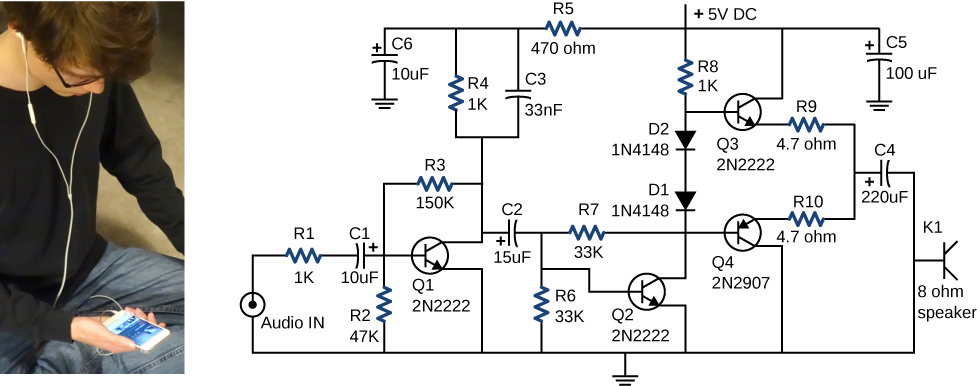6.1: Introduction
( \newcommand{\kernel}{\mathrm{null}\,}\)
In the preceding few chapters, we discussed the electrical concepts of voltage, current, and resistance. In this chapter, we use these concepts to begin to learn how to analyze direct-current (DC) circuits. A circuit is a collection of electrical components connected to accomplish a specific task. Figure 6.1.1 shows an amplifier circuit, which takes a small-amplitude signal and amplifies it to power the speakers in earbuds. Although the circuit looks complex, it actually consists of a set of series, parallel, and series-parallel circuits. Direct-current circuits contain current that only flows in one direction in a given section of the circuit.
An early section of this chapter covers the analysis of series and parallel circuits that consist of resistors. Later in this chapter, we introduce the basic equations and techniques to analyze any circuit, including those that are not reducible through simplifying parallel and series elements. But first, we need to understand how to power a circuit.


